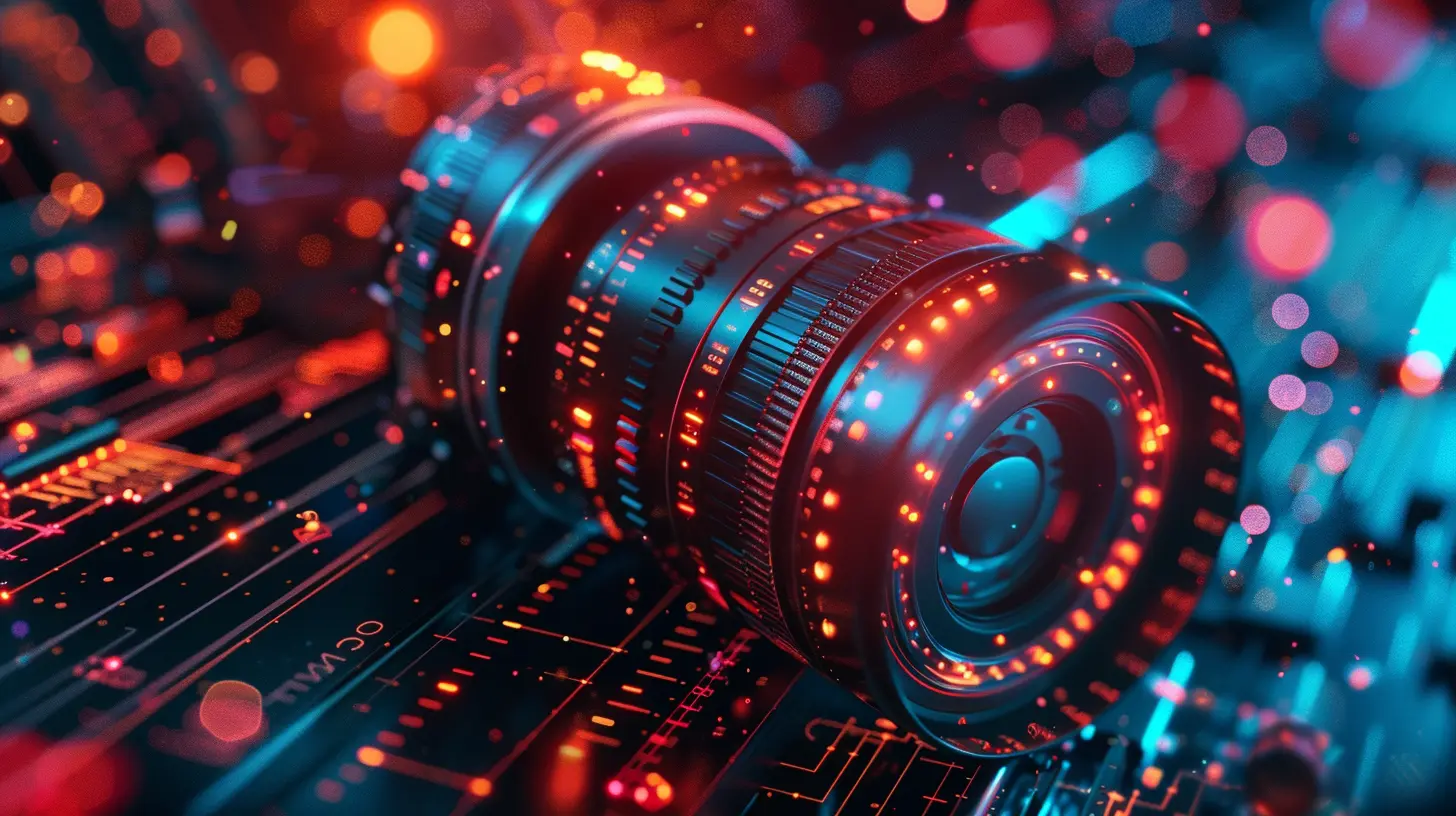How to Use Motion Graphics in Your Video Editing Projects
9 June 2025
Video editing is an art, and like any art, it thrives on creativity and innovation. One of the best ways to elevate your videos and make them more engaging is by incorporating motion graphics. Whether you're working on YouTube videos, social media content, corporate presentations, or full-scale cinematic productions, motion graphics bring a professional polish that grabs attention and keeps viewers hooked.
But how do you use motion graphics effectively without overdoing it? In this guide, we’ll break everything down—from what motion graphics are to how to seamlessly integrate them into your video projects. Let’s dive in!

What Are Motion Graphics?
Motion graphics are animated visual elements—such as text, icons, shapes, or illustrations—that are designed to enhance storytelling. Unlike traditional animation, which focuses on character movement and narrative-driven scenes, motion graphics are typically used to present information dynamically.For example, think about the stylish text overlays in movie trailers, the animated charts in explainer videos, or the eye-catching transitions in a vlog. That's motion graphics at work!

Why Motion Graphics Are Essential for Video Editing
If you want your videos to look visually stunning and professional, motion graphics are a must. Here’s why:1. Boosts Engagement
People have short attention spans. Motion graphics help capture interest quickly, making complex information easier to digest.2. Enhances Storytelling
A well-placed motion graphic can emphasize key points, highlight crucial data, or even evoke emotions that static visuals alone might not convey.3. Adds a Professional Touch
High-quality motion graphics instantly make any video look polished and professionally produced, even if you’re just editing on a laptop at home.4. Improves Brand Recognition
When used consistently, motion graphics (logo animations, branded lower thirds, etc.) can reinforce a brand’s identity across different video projects.
How to Use Motion Graphics in Your Video Editing Projects
Now that you understand the importance of motion graphics, let’s discuss how to effectively integrate them into your videos without overwhelming your audience.1. Use Motion Graphics to Highlight Important Information
Motion graphics should serve a purpose, not just exist for the sake of looking cool. Use them to highlight key points, whether it’s statistics, names, locations, or subtitles.💡 Pro Tip: Keep your animations subtle but effective. Too much movement can be distracting and take away from your video’s main message.
2. Incorporate Lower Thirds for a Professional Look
Lower thirds are text overlays that typically appear at the bottom of the screen. They are commonly used in interviews, news broadcasts, and documentary-style videos to introduce a speaker or provide contextual information.✅ Keep them clean and easy to read
✅ Use consistent branding elements (fonts, colors, animations)
✅ Avoid overly complex animations that might distract from the main content
3. Use Animated Transitions to Keep Your Video Flowing
Instead of using basic cuts, motion graphic transitions can make your video flow more smoothly. A well-designed transition can guide the viewer’s eye and maintain engagement between scenes.Some great transition effects include:
- Fade-ins and fade-outs for a cinematic touch
- Slide transitions for a sleek and modern feel
- Zoom or scale effects for dynamic scene changes
4. Enhance Explainer Videos with Animated Infographics
If your video involves data or complex concepts, animated infographics can simplify the information for your audience. Charts, graphs, and icon animations make otherwise dull data visually engaging.🎯 Tips for using infographics effectively:
- Use simple animations to avoid overwhelming the viewer
- Keep transitions smooth and not too fast
- Match the animation style with your brand’s aesthetic
5. Animate Your Logo for a Strong Brand Presence
A branded intro or outro using an animated logo can leave a lasting impression on your viewers. Whether it’s a subtle fade-in or a more dynamic 3D animation, a well-designed logo animation makes your brand feel more professional.6. Create Eye-Catching Call-to-Actions (CTAs)
Want your viewers to like, subscribe, or visit your website? Motion graphics make CTAs more visually appealing. Rather than displaying plain text, an animated "Subscribe Now" button or a stylish “Follow Us on Instagram” pop-up can attract more engagement.✨ Best Practices for CTA Motion Graphics:
- Place them at strategic moments (beginning, middle, or end)
- Make them subtle but attention-grabbing
- Use brand colors for consistency
7. Use Pre-Made Motion Graphics Templates for Efficiency
Not everyone has the time or skill to create custom animations from scratch. Luckily, there are tons of motion graphic templates available online for tools like After Effects, Premiere Pro, and DaVinci Resolve.Some great sources for templates include:
- Envato Elements
- Motion Array
- Videohive
- Mixkit (free options available!)
💡 Bonus Tip: Customize templates to match your branding rather than using them "as is." This keeps your videos unique and professional.
8. Keep Motion Graphics Subtle and Purposeful
The biggest mistake beginners make? Overusing motion graphics. While animations can make your videos visually engaging, too much movement can overwhelm or annoy the viewer.🤔 Ask yourself:
- Is this motion graphic adding value?
- Does it improve understanding?
- Will it enhance the overall experience?
If the answer is yes, go for it! If not, it’s best to keep things simple.

The Best Tools for Creating Motion Graphics
Now that you know how to use motion graphics effectively, what tools should you use to create them? Here are some of the best motion graphics software available:1. Adobe After Effects (Best for Professionals)
- Industry-standard software for high-quality motion graphics and animations- Extensive tools, plugins, and effects
- Great for both 2D and 3D animations
2. Premiere Pro Essential Graphics Panel (Best for Video Editors)
- Ideal for adding motion graphics directly inside Premiere Pro- Basic but effective motion graphics tools
- Works seamlessly with After Effects templates
3. DaVinci Resolve Fusion (Best Free Alternative)
- Built-in node-based motion graphics system- Excellent for 2D and 3D motion graphics
- Free version available with powerful features
4. Canva & Animaker (Best for Beginners)
- Web-based easy-to-use platforms- Great for simple social media animations
- Pre-made templates for quick designs
Final Thoughts
Motion graphics are a game-changer in video editing, helping to enhance storytelling, improve engagement, and add a professional touch to your content. But remember, less is more—use motion graphics with intent, keeping animations simple and relevant to your video's purpose.Start small, experiment, and find what works best for your style. Whether you’re creating YouTube content, business presentations, or cinematic videos, motion graphics can take your projects to the next level.
Now, go ahead and start adding those sleek, eye-catching animations to your videos!
all images in this post were generated using AI tools
Category:
Video Editing ToolsAuthor:

Reese McQuillan
Discussion
rate this article
2 comments
Ruby Whitaker
Great tips! Motion graphics can truly elevate video projects—looking forward to implementing these techniques.
June 17, 2025 at 3:08 AM

Reese McQuillan
Thank you! I'm glad you found the tips helpful—excited to see how you incorporate motion graphics into your projects!
Damien Harris
Embrace motion graphics in your projects! They can elevate your storytelling and captivate your audience like never before!
June 15, 2025 at 4:29 AM

Reese McQuillan
Absolutely! Motion graphics can transform your storytelling and engage viewers in powerful ways. Dive in!


